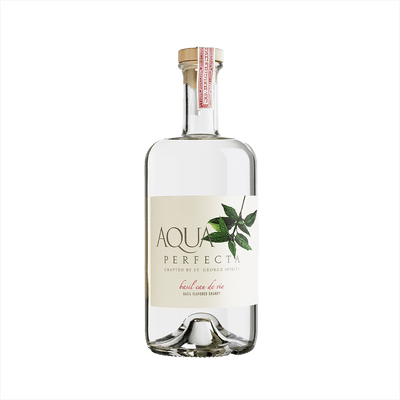Herbal Eau de Vie
What is Herbal Eau de Vie?
Herbal Eau de Vie is a distinctive type of Eau de Vie that captures the essence of aromatic herbs, botanicals, and medicinal plants through careful distillation. Unlike fruit-based eau de vie, these spirits showcase the concentrated flavors of herbs like thyme, rosemary, sage, or wild mountain botanicals, creating clear, potent spirits that taste like liquid gardens. What defines Herbal Eau de Vie is its focus on herbaceous ingredients as the primary flavor source, typically distilled at high proof to preserve the volatile oils and complex aromatics that make each herb unique.
Learn More About Herbal Eau de Vie
What makes Herbal Eau de Vie unique?
Herbal eau de vie stands apart from fruit-based versions by capturing the concentrated essence of botanicals like juniper, pine, or mountain herbs rather than sweet orchard flavors. While fruit eau de vie celebrates the pure taste of pears, plums, or berries, herbal varieties offer complex, often medicinal notes that can range from piney and resinous to floral and bitter. These spirits require different distillation techniques to extract volatile oils from leaves, stems, and flowers without creating harsh or overly vegetal flavors that would overpower the delicate alcohol base.
How is Herbal Eau de Vie made?
Herbal eau de vie starts with a neutral grape or grain spirit that gets infused with carefully selected botanicals like juniper, angelica root, coriander, or regional herbs through maceration or vapor infusion methods. The spirits steep with these aromatics for days or weeks, allowing the alcohol to extract essential oils and flavors before being redistilled to concentrate and refine the herbal character. Some producers finish the process with a second maceration using fresh herbs or flowers, creating layers of complexity that showcase both the base spirit and the botanical blend.
How do you drink Herbal Eau de Vie?
Herbal eau de vie shines brightest when sipped neat at room temperature or slightly chilled, allowing its concentrated botanical flavors to unfold across your palate without dilution. While some people enjoy it on the rocks during warmer months, purists prefer it straight from a small tulip glass that concentrates the aromatic herbs and spices. When used in cocktails, herbal eau de vie works beautifully in spirit-forward drinks like variations on the Last Word or Paper Plane, where its herbal complexity can stand up to other bold ingredients, and it's particularly stunning in late fall and winter cocktails that celebrate seasonal herbs and warming spices.
How do I choose good Herbal Eau de Vie?
Start by considering the dominant herb or botanical on the label—gentian offers earthy bitterness perfect for alpine-style cocktails, while elderflower brings floral sweetness that shines in gin-based drinks. Look for producers who distill their own base spirit rather than sourcing neutral grain alcohol, as this creates more complex flavor integration between the fruit and herbs. Your cocktail choice should guide your selection: choose robust, savory herbal expressions like those made with mountain herbs for stirred drinks that can handle their intensity, while lighter, more floral versions work beautifully in shaken cocktails where their delicate notes won't get lost.
Nutritional Information
Typical Calorie Range per Ounce: 65-75 calories
Typical Carbohydrate Range per Ounce: 0-2 grams
Typical Sugar Range per Ounce: 0-1 grams
Typically Gluten Free: Yes
Herbal eau de vie generally contains fewer calories than many other spirits due to its distillation process, which removes most sugars and carbohydrates. The minimal carb and sugar content comes primarily from any residual plant compounds that survive distillation. Since these spirits are distilled from fruits, herbs, or botanicals rather than grains, they're usually gluten-free by nature.
Always check the specific product label and manufacturer information to confirm gluten-free status, especially if you have celiac disease or severe gluten sensitivity. Some producers may use equipment or processes that could introduce cross-contamination.
Scrolled this far? Your reward? Herbal Eau de Vie Trivia!
- Medieval monks created herbal eau de vie as medicine, not spirits – they believed distilling herbs with alcohol would capture the "water of life" that could cure everything from plague to heartbreak. The Abbey of Fécamp still guards their original Bénédictine recipe from 1510, which contains 27 secret herbs and spices that only three people on Earth know how to combine.
- The most expensive herbal eau de vie ever sold contained actual gold flakes and cost $3,500 per bottle – but here's the kicker: it wasn't the gold that made it pricey. The distillery used wild Alpine herbs that bloom for just three days each year and can only be harvested by hand during a full moon, according to traditional folklore that supposedly affects the plants' essential oil content.
- Chartreuse, the famous herbal eau de vie, naturally glows under black light due to its unique combination of herbs – no artificial additives needed. The monks who make it accidentally discovered this property in the 1960s when someone brought a UV lamp into their cellar. They still have no idea which of their 130 botanicals causes the luminescent effect.
- During Prohibition, American bootleggers couldn't replicate European herbal eau de vie recipes, so they invented their own using whatever grew locally – including poison ivy leaves (which they mistakenly thought would add "spice"). This led to several hospitalizations and gave herbal spirits such a bad reputation that it took decades for Americans to trust them again.
- The legendary Strega liqueur from Italy gets its bright yellow color from saffron, making each bottle contain about $40 worth of the world's most expensive spice. The recipe supposedly came to the Alberti family in a dream, and they've been making it the same way since 1860 – including the peculiar step of aging it in silver-lined tanks that must be stirred counterclockwise exactly 13 times each morning.
Higher-proof spirits can be intense. Mix carefully, taste thoughtfully, and enjoy responsibly.
Gift message (optional)

